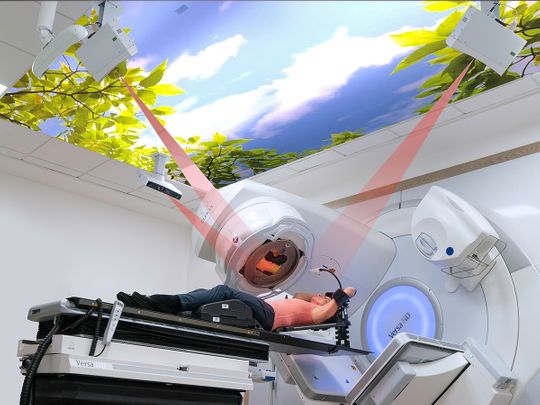
Stereotactic Body Radiation Therapy (SBRT)
Stereotactic Body Radiation Therapy (SBRT) is a radiation therapy approach which delivers high dose radiation to a target within the body, usually up to five treatment sessions. It is able to precisely determine the beam direction and intensity using the advanced treatment-planning software.
It is similar to central nervous system stereotactic radiosurgery, except that it deals with tumors outside the central nervous system (CNS).
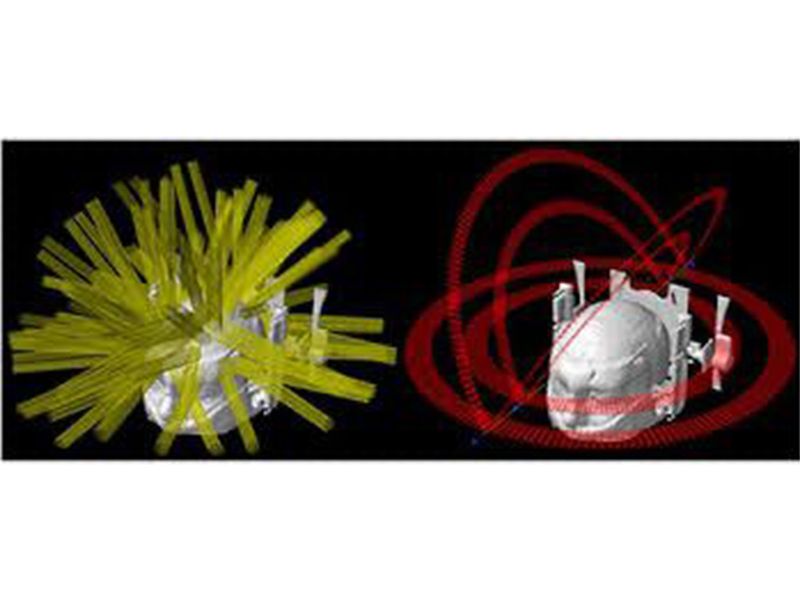
How does SBRT work?
Stereotactic refers to the use of a specifically designed coordinate - system to locate small targets inside the body. This specialized form of radiation involves the use of multiple, highly precise radiation beams to safely deliver high doses of radiation to the tumour, with very sharp dose gradient outside the tumor and the sparing of surrounding normal tissue, in a manner not achievable by standard conventional radiation therapy.
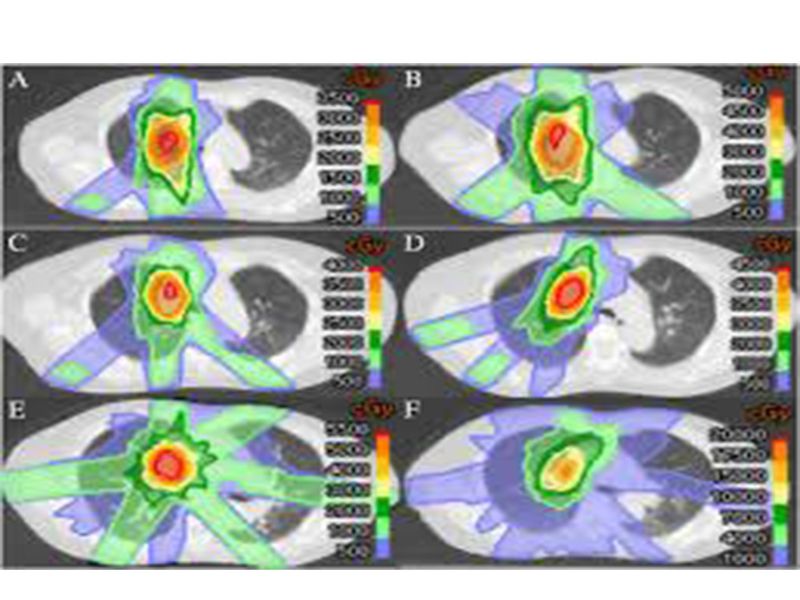
The ability to deliver SBRT has been made possible by the use of better quality imaging to localize the tumors accurately e.g. CT scans, PET, MRI as well as other advanced imaging platforms. Unlike tumours in the brain, tumours in the body can move with, for example, respiration which has to be accounted for – we use DIBH (deep inspiration breath hold).
As this type of treatment requires sub-millimetre precision, it utilizes accurate methods to ensure that radiation is focused on a small area of target area. Immobilisation devices are accessories to ensure the patient does not move during the entire radiation therapy. These include head and neck ‘masks’ and body moulds and other immobilizations/ reproducibility equipment.

Is SBRT suitable for me?
SBRT is generally used to treat small tumours in the following sites that cannot be removed surgically or treated effectively with conventional radiation therapy:
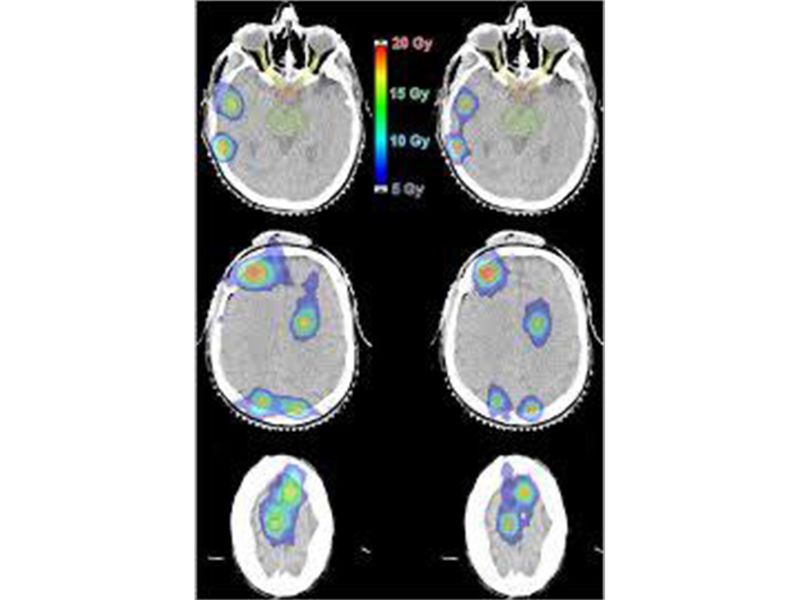
* Spine
* Lung
* Liver
* Pancreas
* Prostate
* Lymph Node & Bone Oligometastasis
Stereotactic Radiosurgery (SRS)
Stereotactic Radiosurgery (SRS) is a type of radiotherapy that allows precise and high dose radiation beams to be delivered to a small, localised area of the body, mostly in the brain to destroy a lesion. It is usually a single dose of treatment but may include up to 5 treatments.
It works like a targeted missile which strikes and destroys the tumor with minimal collateral damage. Unlike open surgery, SRS is relatively painless and non-invasive, and has been used as an effective alternative to surgery or conventional standard fractional radiotherapy for treating small tumours and other selected medical conditions.
How does Stereotactic Radiosurgery (SRS) work?
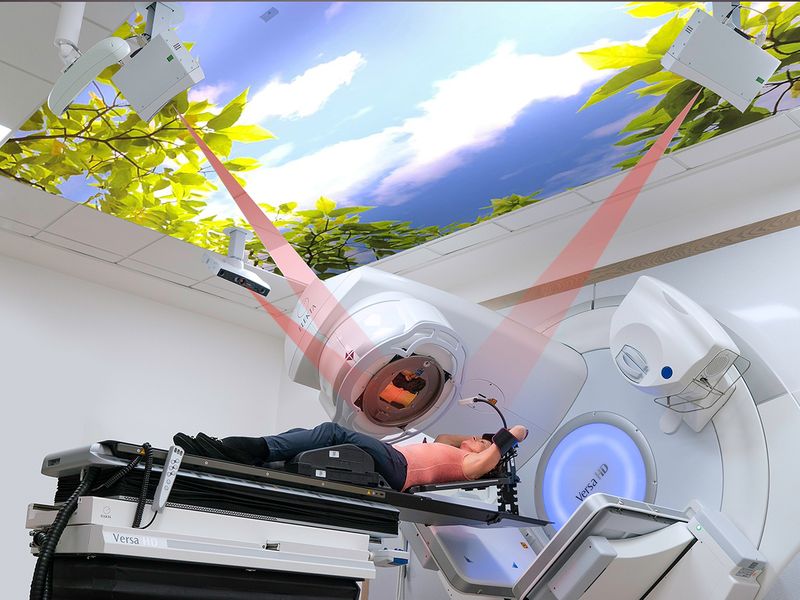
Similar to external beam radiation therapy, radiosurgery is performed using a linear accelerator. It generates a high-energy radiation beam focused precisely on the tumour. The beam is delivered from many different angles, intersecting at the tumour, to deliver the prescribed amount of radiation.
During treatment planning, our clinical team utilizes one or more types of 3-dimensional scans. These can include a CT scan, an MRI and/or a PET scan. Through the use of three-dimensional computer-aided planning and the high degree of immobilization, the treatment can minimize the amount of radiation that passes through healthy brain tissue. Radiosurgery shapes the radiation beam to match the outline of the tumor and includes a very small margin of normal brain to prevent recurrence.
Surface Guided radiotherapy (SGRT)
ACOC Dubai, also uses state of the art, Surface guided radiotherapy system to achieve accuracy. SGRT is one of the most advanced & accurate ways of radiotherapy delivery. It is especially useful for delivering high doses as used in SGRT/ SRS with utmost precision and confidence. It also enables tattoo-less & frameless stereotactic radiotherapy procedures.
Side effects of SBRT & SRS
Stereotactic radiotherapy targets the tumour very precisely and the risk of damage to normal surrounding tissues is minimal. Therefore the side effects may be less than with other types of radiotherapy.
Benefits of SBRT
Minimally invasive and painless
Higher therapeutic ratio: Maximum tumour control and minimal side effects
An alternative for elderly and patients who are unfit for surgeries due to their medical comorbidities
Treatments are on an outpatient basis.
Most Patients resume their usual activities of daily living immediately after treatment.
Side effects of the treatment are low and dependent on the treatment site and can be discussed with the radiation oncologist.
Benefits of Stereotactic Radiosurgery (SRS)
Delivered in a single session or up to 5 sessions.
Maximum tumour control and minimal side effects.
An alternative for elderly and patients who are unfit for surgery due to their medical comorbidities.
Treated on an outpatient basis.
Resume their usual activities of daily living immediately after treatment.
Side effects of the treatment are dependent on the treatment site after consultation with our clinical oncologist.
- Dr Abhinav Ahluwalia is Head of the Department of Radiation Oncology at Advanced Care Oncology Center













